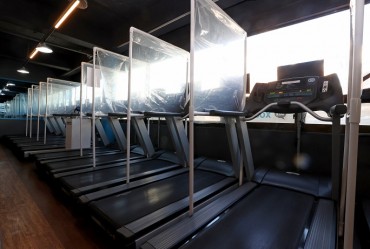
A staggering 43 percent of patients who visited emergency rooms after attempting suicide in South Korea last year were under 30 years old. (Image courtesy of Yonhap)
SEOUL, Mar. 29 (Korea Bizwire) – A staggering 43 percent of patients who visited emergency rooms after attempting suicide in South Korea last year were under 30 years old, including teenagers and those in their 20s, according to a government survey released on Tuesday.
The “2023 Survey on Suicide” by the Ministry of Health and Welfare found that 14.7 percent of respondents had contemplated suicide at least once in their lifetime, with economic hardship cited as the leading cause for such thoughts.
Mandated by the Act on the Prevention of Suicide and the Creation of Culture of Respect for Life, the ministry conducts a nationwide survey on suicide every five years. This latest edition, following previous studies in 2013 and 2018, comprised two components: a public perception survey of 2,807 adults from August 25 to October 8, 2023, and an analysis of 30,665 individuals who attempted suicide and subsequently visited emergency rooms last year.
According to the public perception survey, 14.7 percent of respondents admitted to having contemplated suicide at some point in their lives, a 3.8 percentage point decrease from 18.5 percent in the 2018 survey.
The primary reasons cited for suicidal thoughts were economic difficulties (44.8 percent), domestic challenges (42.2 percent), and emotional distress (19.2 percent), with multiple responses allowed.
Among those who had contemplated suicide, 41.1 percent had sought help, while 7.9 percent had consulted with professionals – a notable increase from 4.8 percent in the 2018 survey.
Both those who had contemplated suicide and those who had not reported feeling that media portrayals of suicide reflected a societal issue, with response rates of 51.4 percent and 50.6 percent, respectively.
Furthermore, 80.9 percent of respondents believed that the government’s suicide prevention policies were helpful, with 84.7 percent specifically citing education and awareness campaigns as effective measures.
The analysis of 30,665 individuals who visited 85 participating medical institutions after attempting suicide last year revealed alarming statistics regarding youth suicide attempts. Unlike the 2018 survey, which focused on adults aged 18 and above, the latest study encompassed all age groups.
Women accounted for 64.8 percent (19,870 individuals) of suicide attempts, nearly 1.8 times higher than men (10,795 individuals, or 35.2 percent).
Alarmingly, those under 30 years old made up approximately 43 percent of suicide attempts, with 9,008 individuals (29.4 percent) aged 19 to 29 and 4,280 individuals (14 percent) under 18. When combined with the 4,251 individuals (13.9 percent) aged 30 to 39, youth and young adults accounted for a staggering 57 percent of suicide attempts.
Among those attempting suicide, 31.2 percent were under the influence of alcohol, with rates of 36.3 percent for men and 28.4 percent for women.
An assessment of mental health treatment revealed that 41.9 percent were receiving treatment, while 13.5 percent exhibited signs of mental health issues despite not having sought care previously. Physically, 42.9 percent were considered healthy.
The primary motives for suicide attempts were mental health problems (33.2 percent), interpersonal issues (17 percent), arguments or conflicts (7.9 percent), and economic difficulties (6.6 percent).
Poisoning (53.1 percent), blunt objects or sharp instruments (18.4 percent), agricultural chemicals (5.3 percent), and gas inhalation (5.3 percent) were the most common methods used in suicide attempts.
The months with the highest rates of suicide attempts were May (9.7 percent), March (8.8 percent), and August (8.8 percent).
M. H. Lee (mhlee@koreabizwire.com)






